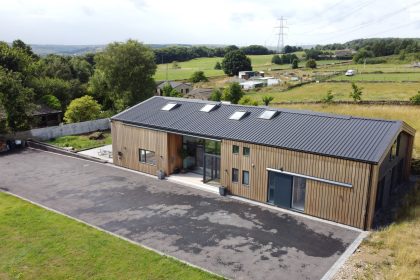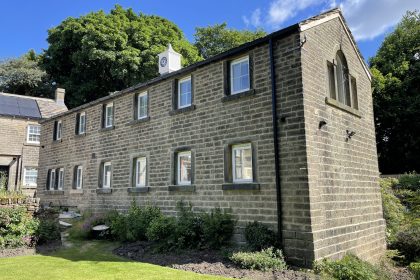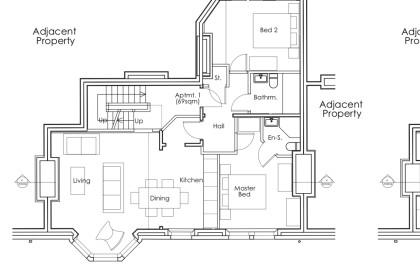Historic England have a particular process in mind in their guidance on development affecting listed buildings, and this is generally what architects should follow.
Preparation
It starts with the aspiration of the client in terms of need, and options to fulfil this need. Then it moves to an assessment of heritage significance of the ‘asset’, i.e. identifying what aspects have high significance (usually the principal features which have led to the building being listed) and what aspects have lower significance. Then a design proposal is developed to meet the need of the client in a way which minimises (and can be seen to minimise) impact on the ‘asset’, i.e. does not damage those aspects which have been assessed as highly significant.
If the local planning authority can see that this process has been followed they are more likely to have confidence in a proposal. From their point of view, they need to be provided with the information they need to make an informed decision on an application, and if they feel the submission documents have done that, things are more likely to go smoothly than if they have not.
Seek advice
Historic England guidance recommends early engagement with Local Authority Planning Departments to avoid clients incurring unnecessary costs, and it is therefore almost always prudent to seek pre-Application advice.
The assessment of significance should also, where appropriate, include an assessment of the significance of the ‘setting’ of a listed building and its curtilage, and the design proposals should take account of that as well, in terms of minimising their impact on this setting.
Note also that important historic features can sometimes be recorded and enclosed as part of design proposals so they can be protected and potentially exposed again in future alterations to the building. Other areas of the building can sometimes be restored or renovated to offset the impact of the proposals too.
Important aspects of the building can furthermore be recorded and/or highlighted in other ways to address or counteract the impact of the proposals.
Formal Submission
When the point is reached where the client wishes to proceed with a formal submission, the submission of a Design and Access Statement should be accompanied by a statement of Heritage Significance, which formalises the assessment. It may be appropriate at this stage to submit proposals about any further investigation and recording of the historic structure where it is affected by the proposal.
We often argue the case for good quality modern design and interventions into listed buildings being more appropriate than trying to replicate the historic style of a building, and more often than not Historic England concurs with this approach. Their focus is on ‘good’ design, i.e. how well it relates to the historic architectural elements of a building, and they don’t often support what they regard as pastiche.
Legibility of the timeline of the listed building’s development is important, and adding a new clear “layer of history” appropriate for the time when the new proposals were implemented can often rightfully be justified for new design proposals.
However, justification arguments and the relative importance of aspects of the Listing are often subjective and can be interpreted in different ways even by different conservation officers within the same Local Authority. It is often prudent to seek specialist advice if this is the case to bolster heritage arguments and seek acceptable compromises.
Stuart Wrathmell Associates are one such consultancy that has provided invaluable support to relevant applications involving listed buildings that we have been involved with, and also contributed in preparing this article, for which we are grateful.
If you have a project involving proposed works to or within the grounds of a Listed Building, contact us at Fibre Architects as we would be only too happy to advise on a strategy to help implement the proposals.








